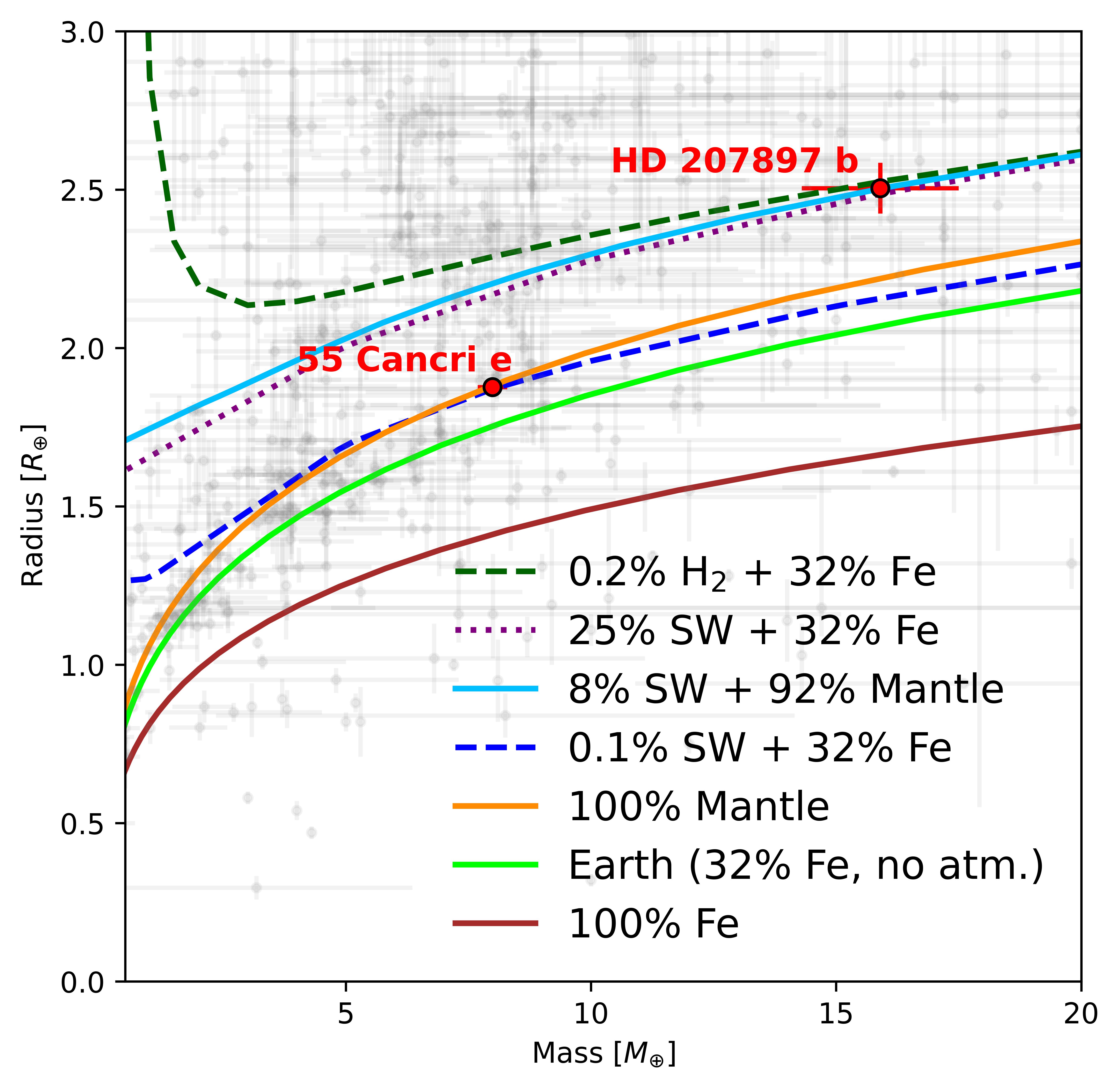I am a postdoctoral researcher at the APEx group (Atmospheric Physics of Exoplanets) in the Max Planck Institute for Astronomy, since December 2022. My research focuses on the internal structures and atmospheres of exoplanets, where I develop modelling tools to interpret mass, radius and atmospheric data from missions and telescopes such as TESS, CHEOPS, ESPRESSO and JWST.
Gas giants
In collaboration with APEx (MPIA, Heidelberg) and LAM (Marseille), we developed the open-source Python package GASTLI (GAS gianT modeL for Interiors), a coupled interior-atmosphere for planets with H/He envelopes. The code’s documentation can be found here, and the Github repository can be found here.
Super-Earths & sub-Neptunes
During my PhD, I contributed to the development of MSEI (Marseille's Super-Earth Interior model, see Brugger et al. 2017), which is a self-consistent interior-atmosphere model applicable to low-mass planets in a wide range of irradiations. MSEI is an interior model for rocky and water-rich compositions, as well as planets with CO2 atmospheres.

MSEI can be used to generate mass-radius curves or within a Markov-chain Monte Carlo (MCMC) to perform retrieval on observational data to obtain the bulk composition and interior conditions of low-mass planets. All you need is the planetary mass and radius with their respective uncertainties, and the host stellar abundances if available. MSEI has been used to analyse the composition in more than 40 exoplanets, including the systems TRAPPIST-1, K2-138, and LHS1140. Don't hesitate to contact me via email if you are interested in using MSEI models for your research.
The chemical composition of a star is closely connected to the composition of the planets it hosts. I conducted a line-by-line, differential chemical analysis of a sample of planet hosts, confirming that the Sun is depleted in refractory elements compared to solar twins without exoplanets. However, other planet hosts are very diverse in chemical composition, whose stellar abundances can be used to set constraints on their planets iron and silicate contents.

Check all my contributions in ORCID
Applications of GASTLI:
GASTLI. An open-source coupled interior-atmosphere model to unveil gas giant composition: Acuña et al. 2024
Selected applications of MSEI:
Characterisation of the hydrospheres of TRAPPIST-1 planets: Acuña et al. 2021
Water content trends in K2-138 and other low-mass multiplanetary systems: Acuña et al. 2022
Interior-atmosphere modelling to assess the observability of rocky planets with JWST: Acuña, L., Deleuil., M. & Mousis, O. 2023
Planetary system LHS 1140 revisited with ESPRESSO and TESS: Lillo-Box, Figueira, Leleu, Acuña, et al. 2020
Stellar spectroscopy of planet hosts:
Detailed chemical compositions of planet hosting stars: I. Exploration of possible planet signatures: Liu, Yong, Asplund, Wang, Spina, Acuña et al. 2020
Detailed chemical compositions of planet hosting stars II. Exploration of the interiors of hypothetical exo-Earths: Wang, Quanz, Yong, Liu, Seidler, Acuña et al. 2021
Theses:
PhD thesis: Modeling the populations of the low mass planets: transition between super-Earths and mini-Neptunes
MSc thesis: Detailed analysis of the chemical composition of stars harboring Earth-like planets

acuna (at) mpia.de
Max Planck Institute for Astronomy
Königstuhl 17
D-69117 Heidelberg
Germany
ORCID: 0000-0002-9147-7925
Bluesky: @astrolore.bsky.social
Twitter/X: @AstroLoreAcuna